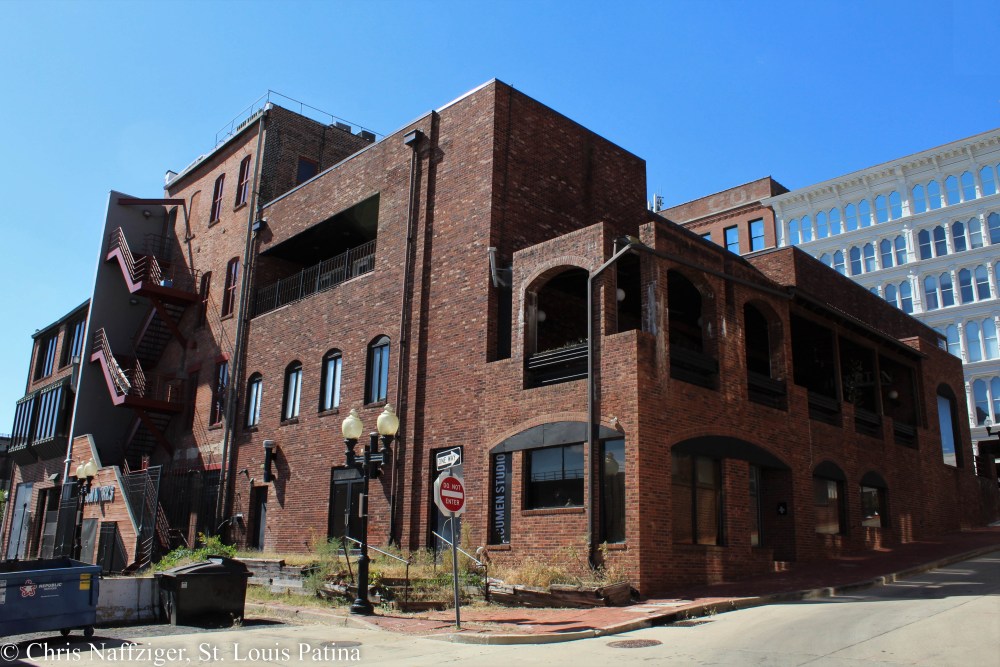
Laclede’s Landing has been in the news a lot lately, and while I’m not going to wade into the controversy that’s been going on concerning crime, homelessness and whatnot, I thought it was time for me to revisit what is perhaps one of the best known neighborhoods in the region. When reviewing old posts, I was startled to discover that while this blog now has well over 5,200 posts, there are only eleven with the Laclede’s Landing tag, and from those, only two or three deal with the buildings in the neighborhood (the rest are miscellaneous or about bridges). This post from November of 2010 is the only one that looks in depth at the old warehouses, so it’s over a decade old!

I did a little research into the backstory of Laclede’s Landing, which was not its original name–it was simply just more of the riverfront.

It turns out the planning started in the mid-1960s, and there was a competing plan, known as River Center, which would have called for the complete demolition of the entire neighborhood.

But by the 1970s, River Center was seen as an inappropriate plan in that it would have created too much density in competition with downtown, so the less dense plan in true St. Louis form was never properly implemented. Looking above at the photograph in 1964, it’s amazing to see just how dense the area of warehouses and factories was, particularly compared to the Near North Riverfront just to the north beyond the then-Veterans’ Bridge.

By the time architects’ renderings were being published, many of those buildings were marked for and actually demolished. And anyone who’s been to the Landing knows that those big plans were never carried out, leaving huge swaths of vacant land with grass lawns or parking lots.

As it ended up, Laclede’s Landing mixed original architecture with 1980s in-fill, which I’ll have to admit I have a sentimental liking for. But much of both is now abandoned. Entertainment districts, as I recently commented upon in my thoughts on Paris, are almost always successful when they happen organically, not when they are contrived by government. If you read the caption closely on the illustration a few photos back, you might have noticed they were looking to reproduce Ghirardelli Square in San Francisco, which is an old chocolate factory. If you read up on or have actually visited that famous and highly influential adaptive reuse project (I visited over thirty years ago), you will realize that St. Louis did not do its homework…

I always thought that the best solution for Laclede’s Landing was for it to be a close-knit, residential neighborhood, not trying to draw in millions of visitors but rather be a self-sustaining community with just enough amenities to support its population and maybe a signature restaurant that would draw in some visitors and provide a place for residents to entertain guests. Its seems like the Advantes Group is trying to do just that, but they have stated they are currently halting plans for more redevelopment until they believe crime has been addressed.

Because seriously, the President Casino is long gone, and it sure didn’t help much to keep the neighborhood going.

And as I remarked a few weeks ago when I was having trouble photographing the Luxembourg Palace in Paris because there were too many buildings in the way, I don’t have that problem in St. Louis–plenty of wide open spaces to take pictures of entire blocks from a long ways away. Wouldn’t it be nice if one day this photograph was impossible to take?

Over the next several days, we’ll go up each north-south street starting at the river, and take an in-depth look at each streetscape.
Bravo. Do what you do. Prod the Doers. Encourage the Shakers.
Thank you for reading!